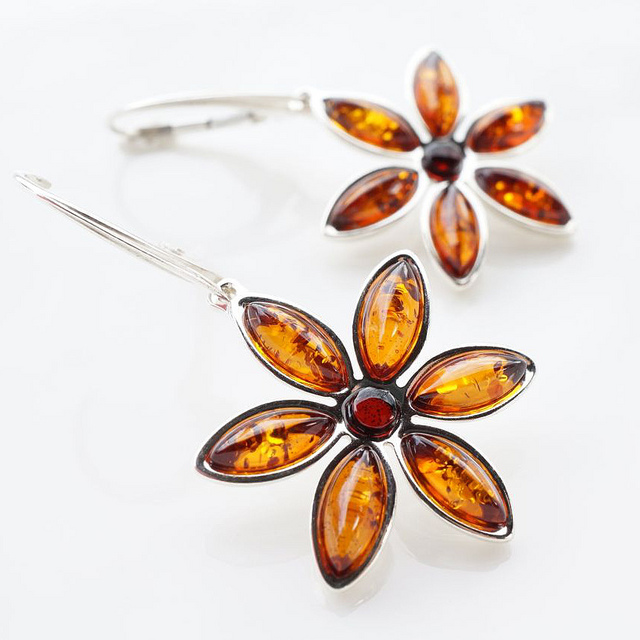Amber Symbolism
Amber has a long history of ornamental use and popular associations with animals, energy, and the Sun. Learn more about amber symbolism and lore.
1 Minute Read
Organic Inclusions and Amber Symbolism
Although amber is a popular gemstone, it isn't actually a stone. This material, actually the hardened resin of ancient trees, often contains bits of plants and small animals, such as insects. These inclusions of preserved remains, coupled with amber's warm feel, may have stimulated the beginnings of amber symbolism. Cultures from all over the world have associated amber with spirits of the natural world and the Sun.
Amber Sunshine
Amber's bright, sunshine colors also enhanced this connection. The Ancient Greek historian Nicias believed amber to be congealed droplets of sweat formed on the Earth as The Sun set beneath the waves. Other ancient writers depicted these "droplets" of fossilized sap as the tears of gods or heroes on various quests.
Animals and Amber Symbolism
Amber symbolism also encompasses the animal world. The Vikings carved amber pieces into animal shapes believed to contain the strengths of the animals. In Ancient Greek and Roman times, women wore amber fish, frog, and rabbit figurines to ensure fertility. The early Chinese believed the souls of tigers became amber upon their release from this plane.
Since amber frequently holds once living things, the classical worshippers of the Mother Goddess believed amber possessed the essence of life itself. Akasha, this animating principle or "fifth element," bound together the other elements of earth, air, fire, and water.
Amber's Magical Associations
Not surprisingly, magic workers would often wear amber necklaces, believed to be charged with powerful energies. The possession or gift of such a necklace indicated great power and esteem. In The Odyssey, Penelope's suitors hope to impress her with gifts. They send their servants to fetch magnificent presents to outdo one another. Of one such gift, Homer writes:
Eurymachus
Received a golden necklace, richly wrought,
And set with amber beads, that glowed as if
With sunshine.
Another quality, frictional electricity, may have reinforced the connection between magic and amber symbolism. If you rub amber against wool or silk it becomes electrically charged. In fact, the Greek word for amber, elektron, has given us the words electron and electricity.
In Chinese cosmology, there are five elements. The fifth element is metal, a great conductor of electricity. The fifth element of Akashic beliefs is thought to reside in amber, which can hold an electric charge. Now that's quite an odd coincidence!
Fara Braid
International Gem Society
Related Articles
Amber Value, Price, and Jewelry Information
Amber Buying Guide
Denver Gem & Mineral Showcase 2017
Unique Gem Materials for Jewelry Design
Latest Articles
Amethyst Sources Around the World: The Geological Story Behind These Purple Gemstones
Brazilianite Value, Price, and Jewelry Information
Ruby-Glass Composites vs Leaded Glass Clarity Enhancements
Morganite Buying Guide
Never Stop Learning
When you join the IGS community, you get trusted diamond & gemstone information when you need it.
Get Gemology Insights
Get started with the International Gem Society’s free guide to gemstone identification. Join our weekly newsletter & get a free copy of the Gem ID Checklist!
